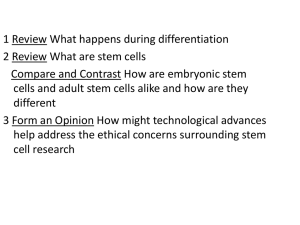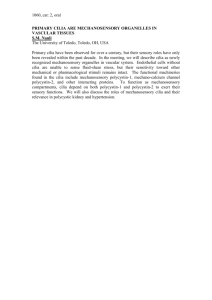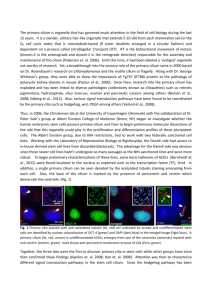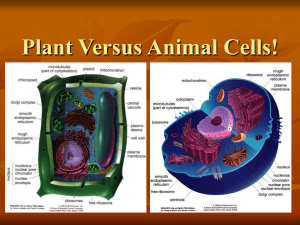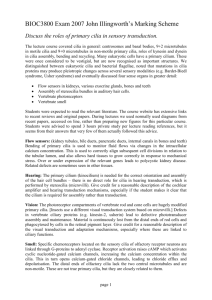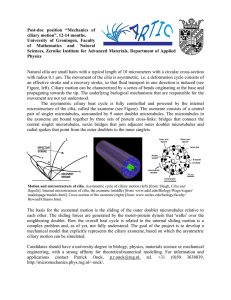WhitakerSeminar2013Abstract
advertisement
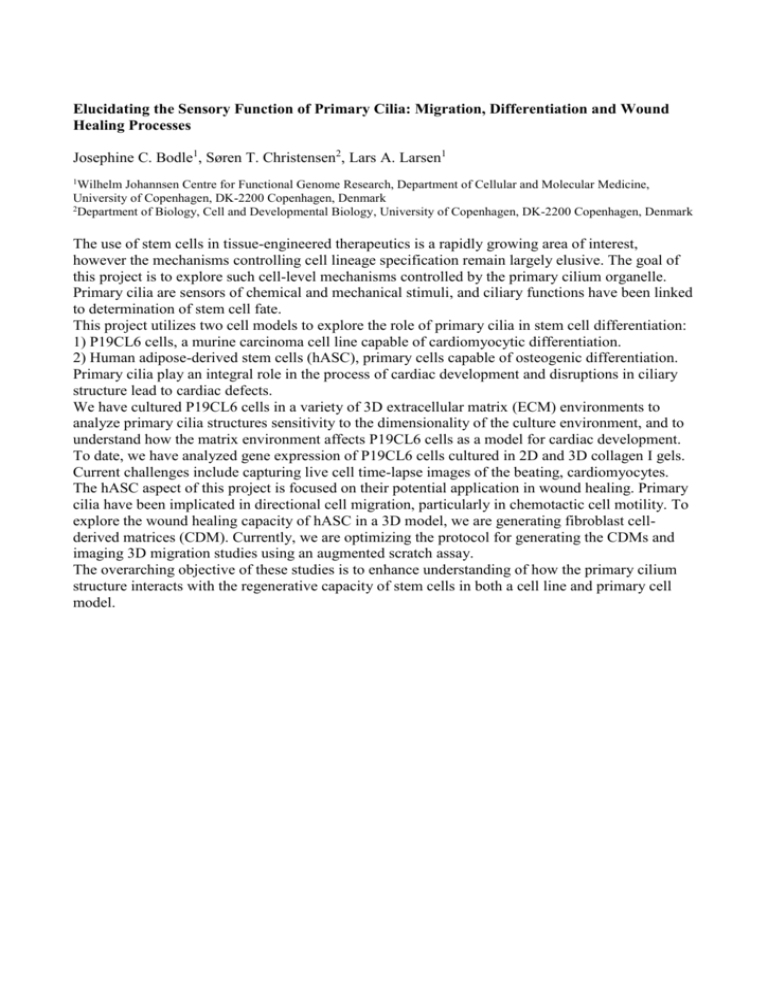
Elucidating the Sensory Function of Primary Cilia: Migration, Differentiation and Wound Healing Processes Josephine C. Bodle1, Søren T. Christensen2, Lars A. Larsen1 1 Wilhelm Johannsen Centre for Functional Genome Research, Department of Cellular and Molecular Medicine, University of Copenhagen, DK-2200 Copenhagen, Denmark 2 Department of Biology, Cell and Developmental Biology, University of Copenhagen, DK-2200 Copenhagen, Denmark The use of stem cells in tissue-engineered therapeutics is a rapidly growing area of interest, however the mechanisms controlling cell lineage specification remain largely elusive. The goal of this project is to explore such cell-level mechanisms controlled by the primary cilium organelle. Primary cilia are sensors of chemical and mechanical stimuli, and ciliary functions have been linked to determination of stem cell fate. This project utilizes two cell models to explore the role of primary cilia in stem cell differentiation: 1) P19CL6 cells, a murine carcinoma cell line capable of cardiomyocytic differentiation. 2) Human adipose-derived stem cells (hASC), primary cells capable of osteogenic differentiation. Primary cilia play an integral role in the process of cardiac development and disruptions in ciliary structure lead to cardiac defects. We have cultured P19CL6 cells in a variety of 3D extracellular matrix (ECM) environments to analyze primary cilia structures sensitivity to the dimensionality of the culture environment, and to understand how the matrix environment affects P19CL6 cells as a model for cardiac development. To date, we have analyzed gene expression of P19CL6 cells cultured in 2D and 3D collagen I gels. Current challenges include capturing live cell time-lapse images of the beating, cardiomyocytes. The hASC aspect of this project is focused on their potential application in wound healing. Primary cilia have been implicated in directional cell migration, particularly in chemotactic cell motility. To explore the wound healing capacity of hASC in a 3D model, we are generating fibroblast cellderived matrices (CDM). Currently, we are optimizing the protocol for generating the CDMs and imaging 3D migration studies using an augmented scratch assay. The overarching objective of these studies is to enhance understanding of how the primary cilium structure interacts with the regenerative capacity of stem cells in both a cell line and primary cell model.



